Author Archives: Ajitesh Kumar
Encoder-only Transformer Models: Examples
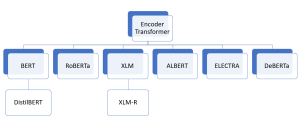
How can machines accurately classify text into categories? What enables them to recognize specific entities like names, locations, or dates within a sea of words? How is it possible for a computer to comprehend and respond to complex human questions? These remarkable capabilities are now a reality, thanks to encoder-only transformer architectures like BERT. From text classification and Named Entity Recognition (NER) to question answering and more, these models have revolutionized the way we interact with and process language. In the realm of AI and machine learning, encoder-only transformer models like BERT, DistilBERT, RoBERTa, and others have emerged as game-changing innovations. These models not only facilitate a deeper understanding of …
LLMs & Semantic Search Course by Andrew NG, Cohere & Partners
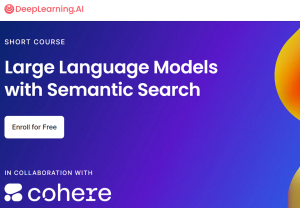
Andrew Ng, a renowned name in the world of deep learning and AI, has joined forces with Cohere, a pioneer in natural language processing technologies. Alongside him are Jay Alammar, a well-known educator and visualizer of machine learning concepts, and Serrano Academy, an esteemed institution dedicated to AI research and education. Together, they have launched an insightful course titled “Large Language Models with Semantic Search.” This collaboration represents a fusion of expertise aimed at addressing the growing needs of semantic search in various applications. In an era where keyword search has dominated the search landscape, the need for more sophisticated, content-aware search capabilities is becoming increasingly evident. Content-rich platforms like …
Quiz: BERT & GPT Transformer Models Q&A

Are you fascinated by the world of natural language processing and the cutting-edge generative AI models that have revolutionized the way machines understand human language? Two such large language models (LLMs), BERT and GPT, stand as pillars in the field, each with unique architectures and capabilities. But how well do you know these models? In this quiz blog, we will challenge your knowledge and understanding of these two groundbreaking technologies. Before you dive into the quiz, let’s explore an overview of BERT and GPT. BERT (Bidirectional Encoder Representations from Transformers) BERT is known for its bidirectional processing of text, allowing it to capture context from both sides of a word …
7 Free MIT AI / Machine Learning Courses: Enroll Now!

Are you eager to dive into the world of machine learning and AI but worried about the costs? Are you fascinated by how data analytics can shape the future of various industries? What if you could access top-notch education from one of the leading institutions in the world, absolutely free? In the next six months, MIT is offering seven upcoming free courses designed to equip you with the knowledge and skills in machine learning, AI, and data analytics. Whether you’re a seasoned professional looking to upskill or a beginner ready to embark on a new journey, these courses provide an incredible opportunity. In this blog, we’ll delve into the details …
Pre-training vs Fine-tuning in LLM: Examples
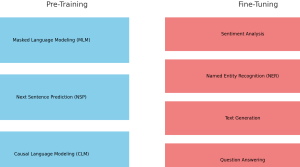
Are you intrigued by the inner workings of large language models (LLMs) like BERT and GPT series models? Ever wondered how these models manage to understand human language with such precision? What are the critical stages that transform them from simple neural networks into powerful tools capable of text prediction, sentiment analysis, and more? The answer lies in two vital phases: pre-training and fine-tuning. These stages not only make language models adaptable to various tasks but also bring them closer to understanding language the way humans do. In this blog, we’ll dive into the fascinating journey of pre-training and fine-tuning in LLMs, complete with real-world examples. Whether you are a …
IIT Madras Fellowship in AI for Social Good
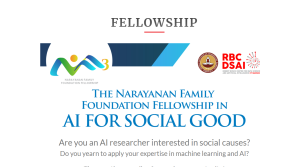
Are you an AI researcher driven by the passion to make a positive impact on society? Do you seek to use your knowledge in machine learning and AI to contribute to real-world issues? Are you intrigued by the idea of joining a leading interdisciplinary research center for data science in India? Then here is the opportunity to discover a unique opportunity that aligns with your aspirations and expertise at the Robert Bosch Centre for Data Science and Artificial Intelligence (RBCDSAI), IIT Madras. Apply Now for fellowship program in AI for social good. About RBCDSAI RBCDSAI is one of India’s pre-eminent interdisciplinary research academic centers specializing in Data Science and AI. …
Top 5 Books on Generative AI: New Releases on Amazon

Are you fascinated by the potential of generative artificial intelligence (AI)? Are you looking for the latest insights and knowledge in the field of AI and its creative applications? Look no further! In this blog post, we’ll introduce you to the top 5 books on generative AI that have been making waves on Amazon in the last 90 days. These books delve into various aspects of generative AI, offering readers a comprehensive understanding of its implications, applications, and transformative power. 1. The Artificial Intelligence and Generative AI Bible: [5 in 1] The Most Updated and Complete Guide Author: Alger Fraley Rating: 4.4 Step into the world of generative AI with …
Machine Learning Projects for Final Year Students: Examples
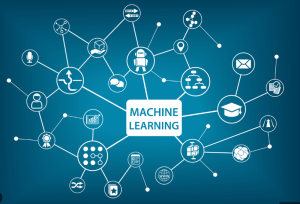
As aspiring data scientists, computer scientists, and statisticians, the final year of your academic journey presents a perfect opportunity to showcase your skills and knowledge in practical applications. In this blog, we will explore a diverse set of exciting machine-learning projects that are well-suited for final-year students. These projects cover various domains, including education, healthcare, crime prediction, and more. We will delve into each project’s description, problem type (classification, regression, etc.), and the methods used for analysis. Whether you are seeking inspiration for your final year project or simply eager to explore the power of machine learning in real-world scenarios, this blog has something for everyone! In case you would …
Huggingface Transformers Hello World: Python Example
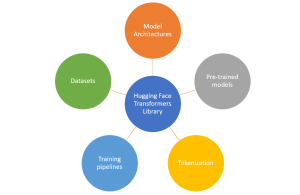
Pre-trained models have revolutionized the field of natural language processing (NLP), enabling the development of advanced language understanding and generation systems. Hugging Face, a prominent organization in the NLP community, provides the “transformers” library—a powerful toolkit for working with pre-trained models. In this blog post, we’ll explore a “Hello World” example using Hugging Face’s Python library, uncovering the capabilities of pre-trained models in NLP tasks. With Hugging Face’s transformers library, we can leverage the state-of-the-art machine learning models, tokenization tools, and training pipelines for different NLP use cases. We’ll discuss the importance of pre-trained models in NLP, provide an overview of Hugging Face’s offerings, and guide you through an example …
Prompt Engineering: Core Principles, Examples
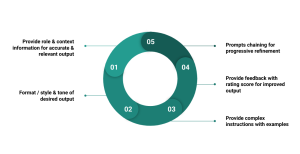
Ever chatted with Siri or Alexa and wondered how they come up with their answers? Or how do the latest AI tools seem to “know” just what you’re looking for? That’s all thanks to something called “prompt engineering“. In this blog, we’ll learn the key concepts of prompts engineering. We’ll talk about what prompt engineering is, its core guiding principles, and why it’s a must-know in today’s techy world. Let’s get started! What is Prompt Engineering? Prompt engineering is the art and science of designing, refining and optimizing prompts to guide the behavior of generative AI models like those built on the GPT architecture. While the underlying AI model might …
Exploring Amazon Science Publications: A Quick Guide

In the ever-evolving world of technology and research, staying updated with the latest advancements is crucial. Amazon Science Publications has emerged as a treasure trove for those hungry for knowledge, offering a plethora of articles that span a wide range of topics. Whether you’re an AI / ML researcher, a student, or just a curious mind, this platform has something for everyone. Let’s delve into the vast ocean of articles available on Amazon Science Publications. Research Areas: Tags: Conferences: Journals: Date: Whether you’re looking for the latest articles from 2023 or want to revisit the gems from 2015, Amazon Science Publications has got you covered. With articles spanning from 2015 …
Greedy Search vs Beam Search Decoding: Concepts, Examples
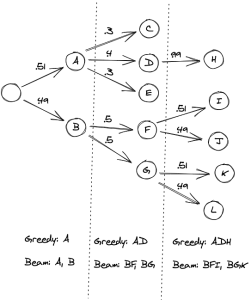
Have you ever wondered how machine learning models transform their intricate calculations into clear, human-readable language? Or how your smartphone knows exactly what you’re going to type next before you even start typing? These everyday marvels are powered by a critical component of natural language processing (NLP) known as ‘decoding methods‘. But how do these methods work, and why are there different types? In the vast field of machine learning, a primary challenge in natural language processing tasks is converting a model’s computational output into an understandable and coherent text. Whether it’s autocompleting your sentences, translating text from one language to another, or generating a news article, these tasks involve …
NPTEL’s Machine Learning & Data Science Online Courses (Jul-Nov 2023)

In the rapidly evolving domains of Machine Learning, Data Science, and Artificial Intelligence, the quest for quality education and courses has become paramount. For those familiar with the educational landscape of India, the Indian Institutes of Technology (IITs) stand out as beacons of excellence. Established by the government of India, the IITs are autonomous public technical universities that are recognized globally for their outstanding curriculum, research, and innovation. Every year, thousands of students vie for a coveted spot in these institutions, and their alumni have made significant contributions to technology and research worldwide. NPTEL (National Programme on Technology Enhanced Learning), in collaboration with these premier IITs, has curated a range …
Vanishing Gradient Problem in Deep Learning: Examples
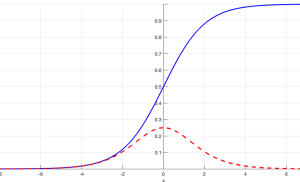
Ever found yourself wondering why your deep learning (deep neural network) model is simply refusing to learn? Or struggled to comprehend why your deep neural network isn’t reaching the accuracy you expected? The culprit behind these issues might very well be the infamous vanishing gradient problem, a common hurdle in the field of deep learning. Understanding and mitigating the vanishing gradient problem is a must-have skill in any data scientist‘s arsenal. This is due to the profound impact it can have on the training and performance of deep neural networks. In this blog post, we will delve into the heart of this issue, learning the calculus behind neural networks and …
GPT Models In-context Learning: Examples
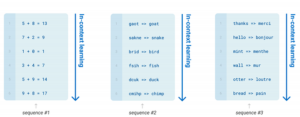
Have you ever wondered how AI models like OpenAI GPT-3 (Generative Pretrained Transformers-3) can generate impressively human-like text? Enter the realm of in-context learning that gives GPT-3 its conversational abilities and makes it extraordinary. In this blog, we’re going to learn the concepts of in-context learning, its different forms, and how GPT-3 uses it to revolutionize the way we interact with AI. What’s In-context Learning? In-context learning is at the heart of these large language models (LLMs), enabling GPT models to understand/comprehend and create text that closely resembles human speech, based on the instructions and examples they’re provided. As the model learns about the context based on the examples provided …
DCGAN Architecture Concepts, Real-world Examples
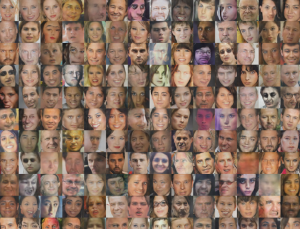
Have you ever wondered how AI can create lifelike images that are virtually indistinguishable from reality? Well, there is a neural network architecture, Deep Convolutional Generative Adversarial Network (DCGAN) that has revolutionized image generation, from medical imaging to video game design. DCGAN’s ability to create high-resolution, visually stunning images has brought it into great usage across numerous real-world applications. From enhancing data augmentation in medical imaging to inspiring artists with novel artworks, DCGAN‘s impact transcends traditional machine learning boundaries. In this blog, we will delve into the fundamental concepts behind the DCGAN architecture, exploring its key components and the ingenious interplay between its generator and discriminator networks. Together, these components …
I found it very helpful. However the differences are not too understandable for me